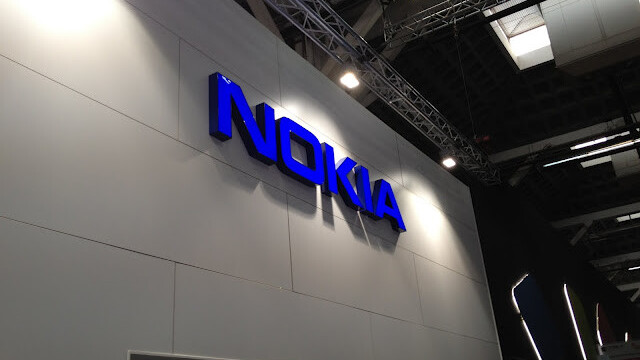
Nokia has just issued a press release stating that in an effort to “protect its innovations and intellectual property”, the company has filed patent lawsuits against rival smartphone makers HTC, RIM and Viewsonic that cover 45 of its patents.
The Finnish mobile maker says that the companies infringe a number of its standards essential patents, filing suits to “end the unauthorized use of our proprietary innovations and technologies, which have not been widely licensed.”
According to the release, the patents referred to in the lawsuit have already been licensed by over 40 companies. It also lists where and with who it has filed its complaints, noting 45 individual patents have been named in its complaints in Mannheim and Munich in Germany, and Delware in the US:
Nokia’s actions include a complaint to the US International Trade Commission (ITC) against HTC, suits against HTC and Viewsonic in the Federal District Court of Delaware, US, against HTC and RIM in the Regional Court in Dusseldorf, Germany and against all three companies in the Regional Courts in Mannheim and Munich, Germany. In total, 45 Nokia patents are in suit in one or more of the actions.
As for the patents? FossPatents grabbed a list of the patents in question (they can be found at the foot of the post).
Nokia accuses HTC, RIM and Viewsonic of using technologies named in its patents to enable hardware capabilities such as “dual function antennas, power management and multimode radios”, but also in its software features, including “application stores, multitasking, navigation, conversational message display, dynamic menus, data encryption and retrieval of email attachments on a mobile device.”
While Nokia has been the subject of its fair share of patent lawsuits, it has enjoyed success licensing its patents to some of its rivals, including Apple.
In June 2011, Nokia and Apple finally settled all of their patent disputes, resulting in an agreement that saw the withdrawal of all complaints filed by both companies with the US International Trade Commission.
The agreement saw Apple make a one-time payment, followed by continued royalty payments.
The Patents
- U.S. Patent No. 5,570,369 and EP0673175 on “power saving functionality in a GSM device”
- U.S. Patent No. 5,884,190 on “mobile devices that can act as wireless route with more than one network (tethering)”
- U.S. Patent No. 6,393,260 on a “method for attenuating spurious signals with a balanced mixer in the receiver”
- U.S. Patent No. 7,415,247 and EP1133831 on “one radio transceiver that can work with more than one air interface”
- U.S. Patent No. 6,188,909 and EP1439723 on “push messaging”
- U.S. Patent No. 7,366,529 on “push messaging”
- U.S. Patent No. 6,728,530 on “over the air synchronising of mobile device calendar”
- U.S. Patent No. 7,106,293 and EP1312974 on “integrated light guide for the light sensor which regulates screen brightness”
- U.S. Patent No. 6,141,664 on “wireless synchronisation of databases (e.g. calendar) with date range”
- U.S. Patent No. 7,209,911 on “wireless synchronisation of databases (e.g. calendar) using filters”
- U.S. Patent No. 6,212,529 on “wireless synchronisation of databases”
- U.S. Patent No. 5,878,351 on a “message queuing technology in mobile devices”
- U.S. Patent No. 6,865,404 on an “improved user interface for mobile devices”
- U.S. Patent No. 6,647,370 on “time zone adjustment for calendar events”
- U.S. Patent No. 6,349,263 on “use of compass and GPS for digital routing”
- U.S. Patent No. 6,587,788 on “integrated GPS based positioning system with wireless map data”
- U.S. Patent No. 7,460,953 on an “improved image based navigation system”
- U.S. Patent No. 6,882,870 on an “improved mobile device that can simultaneously communicate across mutiple networks”
- U.S. Patent No. 6,788,798 on an “earpiece with two acoustic chambers to improve leak tolerance”
- U.S. Patent No. 5,895,884 on a “shielding device with push fit lid, electromagnetic shielding in the device”
- EP0998024 on a “Modulator featuring a low pass filter between two transistors”
- EP 1581015 on a “mobile phone UI with menus created or changed by data received wirelessly”
- EP1516269 on “near field communications, signals from another device can trigger applications”
- EP0966847 on a “system to allow access to mobile services via internet for e.g. application store”
- EP1075750 on a “three stage method for receiving email content e.g. attachments”
- EP0812120 on a “terminal with UI to allow choice from a changing service selection e.g. application store”
- EP1581016 on “two modes for connecting to the Internet”
- EP0792077 on “storage of background app in non-volatile memory”
- EP1329982 (asserted in two different versions, including a divisional) on a “dual function component attaching antenna to phone and separating from earth plane”
- EP1474750 on a “multimedia tag associated with location”
- EP0882347 on “selectable homescreens with different functionality but all including phone function”
- EP0879538 on a “feature that allows remote activation of device software by the network”
- EP0754395, a GSM/GPRS-essential German patent on “additional location management during virtual data connection”
- DE19815597, a GSM/AMR-essential German patent on “selective puncturing in channel coding to optimise frame error rate”
- DE19723659, a German patent essential to WiFi/WLAN and GSM/GPRS, on “encryption using variable synchronization data”
- DE19835427, a German patent essential to WiFi/WLAN and GSM/GPRS, on “adapting higher level data into octets”
- EP1246071 on a “mobile phone that can also work as a variety of slave devices, e.g. USB storage device”
- EP1322072 on a “mobile communication system with server that can masquerade as end user”
- EP0982959 on a “conversational display of incoming and outgoing messages”
- EP0824813 on a “further encryption method for wireless packet data”
Get the TNW newsletter
Get the most important tech news in your inbox each week.
